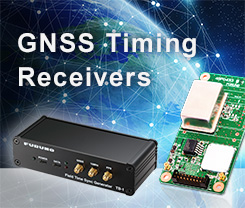Column
A Solo Journey
- Three-liter Microsatellite Mission Support via GPS (GNSS) and Satellite Communication -
At the age of 83, Kenichi Horie became the oldest person in the world to complete a solo, nonstop journey across the Pacific Ocean. Throughout his voyage alone across the vast ocean, Horie had some help from both GPS technology and satellite communication technology, both of which were available all along his route. On another solo journey—this time in space—the same GPS and satellite communication technologies provided similar support to a lone spacecraft. Let's explore this fascinating experimental mission carried out using a microsatellite.
* A Solo Journey: The GNSS Tracking System That Helped Kenichi Horie Cross the Pacific
Microsatellites Made of Standard-sized Cubes Measuring Ten Centimeters Across
 A carbon dioxide gas cartridge is triggered to deploy a sail measuring roughly 80 centimeters across, which slows the satellite via air resistance. (Source: June 21, 2021 press release materials from The University of Tokyo, Nihon University and JAXA.)
A carbon dioxide gas cartridge is triggered to deploy a sail measuring roughly 80 centimeters across, which slows the satellite via air resistance. (Source: June 21, 2021 press release materials from The University of Tokyo, Nihon University and JAXA.)
In the Japanese consumer market, standard milk packaging is a 1-liter carton measuring 7 by 7 centimeters along its sides and 23.5 centimeters in height. In the 1990s, an American university created the first educational-use kit for a "CubeSat," which is an ultra-small, cube-shaped satellite that has the same capacity as the above milk carton but measures 10 centimeters along its sides. All of the parts and instrumentation necessary to make the satellite function are packed into this tiny cube. The standard CubeSat size is denoted as 1U, meaning one cube unit, but this can be scaled up in multiples to 2U, 3U, 6U, or even larger sizes. Thus far, more than 200 CubeSats have been launched into space.
Compared with full-sized satellites, which come with high costs and other challenges, a CubeSat is often more feasible to build, and it can be used on missions where the risks are too high for large satellites. One example of this is the 3U-sized EGG microsatellite, built and put into orbit in 2017 by The University of Tokyo, Nihon University and the Japan Aerospace Exploration Agency (JAXA) for a mission to decelerate gradualy using the thin atmosphere.
Under normal circumstances, satellites that experience orbital decrease and, much like shooting stars and similar celestial objects, eventually hit earth's atmosphere and burn up at high temperatures. A satellite has high potential energy corresponding to its distance from the planet, as well as considerably high kinetic energy based on its orbital speed (which is usually around several kilometers per second). When it re-enters the atmosphere, those energies turn all at once into heat, which is why burn-up is inevitable.
Crewed spacecraft and other spacecraft which cannot be allowed to burn up during re-entry utilize reverse thrust to decelerate and come equipped with an outer layer of high-temperature-resistant heat shielding. With small-scale satellites, however, such measures are not possible, so researchers needed to figure out another way to get them safely back to Earth. The EGG`s (re-Entry satellite with Gossamer aeroshell and GPS/Iridium) plan, as mentioned above, was to decelerate gradualy using the thin atmosphere, an approach called "aerobraking".
Departing from the ISS for Earth
 A graph showing the experimental satellite's altitude on the Y axis based on positioning data. Its altitude plummets rapidly starting around the time the spacecraft drops below 300 kilometers. (Source: June 21, 2021 press release materials from The University of Tokyo, Nihon University and JAXA.)
A graph showing the experimental satellite's altitude on the Y axis based on positioning data. Its altitude plummets rapidly starting around the time the spacecraft drops below 300 kilometers. (Source: June 21, 2021 press release materials from The University of Tokyo, Nihon University and JAXA.)
EGG was put into orbit on January 16, 2017, departing from the International Space Station (ISS) on a course for earth. The satellite, encased in protective cushioning material, was initially sent together with supplies up to the ISS, where astronauts carried out the final checks before launching the satellite into space. The microsatellite made it possible, and the approach enabled the inclusion of delicate components and mechanisms in the satellite which would normally be damaged by vibrations and shocks during a traditional launch.
On February 11, the satellite's carbon dioxide gas cartridge was activated, inflating a ring-shaped shell that expanded out into a sail. This marked the start of the aerobraking experiment. Thereafter, communication with the satellite continued for 120 days, until May 15, during that time, the onboard GPS receiver module continued to record position information and send it via a satellite communication channel to researchers on the ground. This enabled project operators to monitor, in great detail, amounts of deceleration achieved and declines in altitude— data that will likely prove very useful on future missions using satellites to send supplies and equipment to Mars and other destinations that have atmospheres.
The compact, power-efficient GPS receiver and satellite communication module, which was small enough to fit in a 3U (10 × 30 cm) satellite, was critical to the success of this experiment. Indeed, once could say that it was the very existence of this positioning and communication subsystem that made this mission to measure satellite deceleration possible in the first place.
Incidentally, the GPS receiver module used was a Firefly module, which is a modified consumer-market chip. The mission's receiver was designed with consideration for the Doppler effect, which comes into play in a satellite traveling at high speeds reaching several kilometers per second. It is a highly unique, spacecraft-use GPS receiver chip—one of the smallest available anywhere in the world—and has seen applications in other CubeSats as well as government and private-sector sounding rockets.
Ultimately, this solo voyage of the EGG concluded with the CubeSat burning up during atmospheric entry, but data logged along the way has provided us with singular, valuable information that can be put to use in the future. It inspires imagined future scenarios which may someday come to fruition, wherein a lone spacecraft completes a long, solitary journey and parachutes cargo down to its final destination—or perhaps lands directly—on a distant planet.
Writer introduction

Mr. Mitsunari Kita Science and technology writer
Born in Ishikawa Prefecture in 1964. Based on his experience in covering industrial technology, cutting-edge technology, and space development, he is passionate about unraveling and conveying difficult topics in an interesting way to people of all ages, from children to senior citizens. From 2009 to 2014, he was a member of the editorial board of "JAXA's," the official magazine of the Japan Aerospace Exploration Agency. Author and co-author of the following books: 『あなたにもミエル化? ~世間のなりたちを工学の視点から~』(幻冬舎mc)、『私たちの「はやぶさ」その時管制室で、彼らは何を思い、どう動いたか』(毎日新聞社)、『東京大学第二工学部70周年記念誌 工学の曙を支えた技術者達』(東京大学生産技術研究所) etc.,
* All registered trademarks used herein are the property of their respective owners.
Pick up
Column
FURUNO Column
-
Common Problems That Affect GPS/GNSS Time Synchronization

-
How to select GPS/GNSS antennas for time synchronization

Column by Mr. Mitsunari Kita (Science and technology writer)
-
The Observation Network Created by the Earthquake Proves Useful for Accurate Timekeeping (Part Two of Two) - A Solution to the "Mr. Higgins Problem" in Space -

-
The Observation Network Created by the Earthquake Proves Useful for Accurate Timekeeping (Part One of Two)

-
FURUNO ELECTRIC Joins Experts From Around the World on a Norwegian Island for Jammertest 2024

-
Unraveling the Mysteries of Venus Based on "Occultation"

-
Atoms as the Basis for Measuring Both Fleeting Moments and Near-Eternities

-
Time Progressing with a Speed Difference of Just 4.4647 Ten-Billionths!

-
Critters Who Revitalize Forests Through the Spreading of Food Caches

-
Small But Significant Variances in Gravity and Time (Part Two of Two)

-
Small But Significant Variances in Gravity and Time (Part One of Two)

-
Why the GT-100 Time-synchronization GNSS Receiver Module is Like Fragrant Soup Curry

-
What Rainbows Can Teach Us About Dual-Band GNSS

-
The Amazing Things That Are Possible With Just a Clock

-
When Subterranean Earth Meets Outer Space

-
Using the TB-1 and GT-100 at a "Multipath Dojo" in the Major Metropolis of Osaka

-
The Disaster-struck Field Time Sync Generator TB-1: True Performance Revealed Through a Lightning Strike

-
Knowing the "Now" of Our Earth Through GNSS

-
The Reason GPS Counts Time in 1.5-second Intervals

-
Similarities Between "On My Count!," the 117 Notification System, and GPS

-
Reliable Clocks Help Us Find a Silver of the Clouds

-
Why Time Synchronization is Vital for Criminal Investigations, Seismograph Measurements and Solar Wind Observation

-
What Was "Cesium" About Cesium Akina?

-
Updating Analog Broadcasting with GNSS Time Synchronization Technology

-
The Long History of One Second (Part II)

-
The Long History of One Second (Part I)

-
A Solo Journey - Three-liter Microsatellite Mission Support via GPS (GNSS) and Satellite Communication -

-
A Solo Journey - The GPS (GNSS) Tracking System That Helped Kenichi Horie Cross the Pacific -

-
The Day After a Superflare - Effects on power and wireless communication infrastructures -





